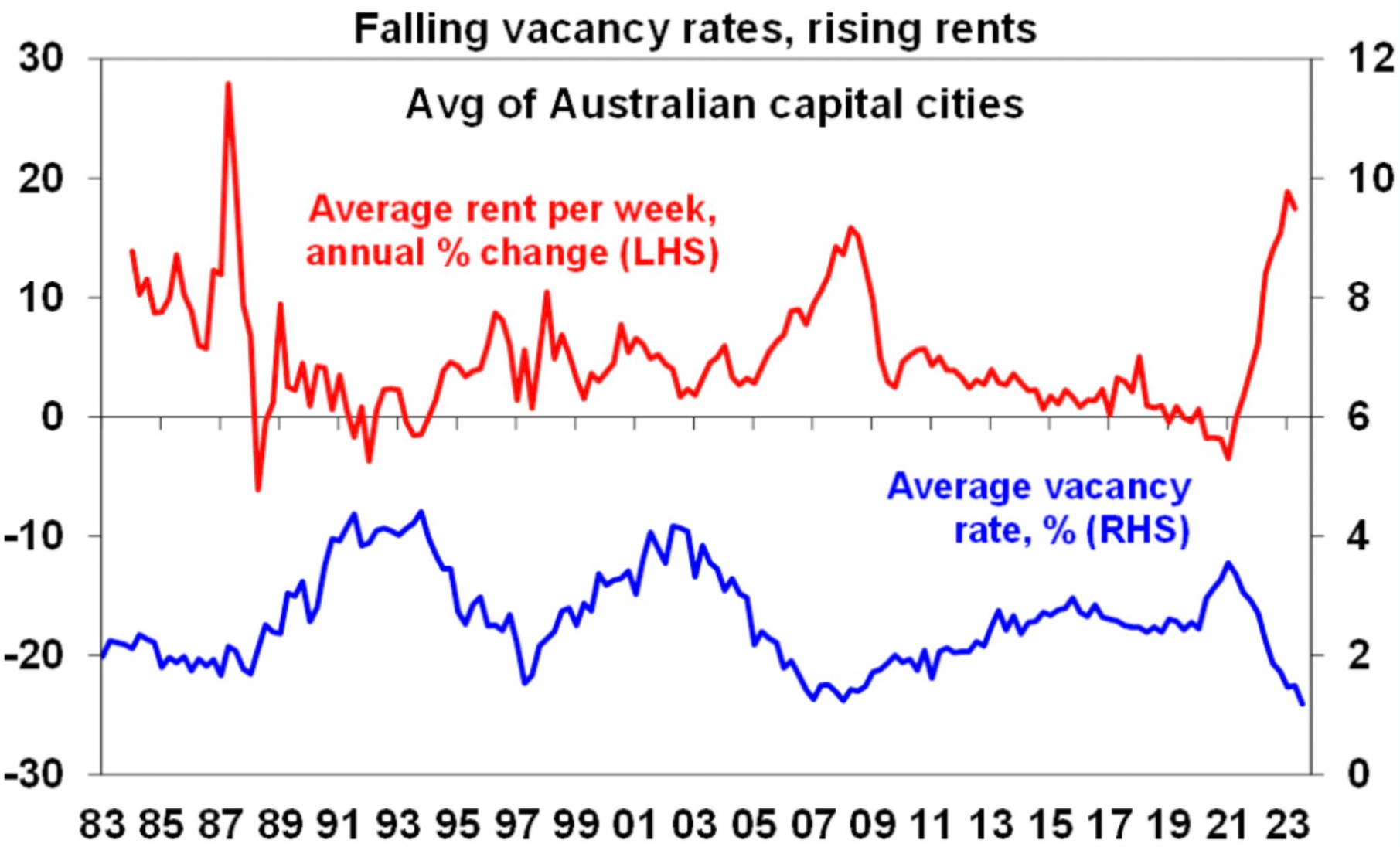AMP chief economist, Shane Oliver, published the below chart on Twitter illustrating how the record low rental vacancy rate across Australia has driven rents into the stratosphere:

Source: Shane Oliver (chief economist at AMP)
This follows Oliver’s statement to last week’s AFR Property forum where he blamed decades of high immigration for driving the nation’s housing crisis:
“If you go back to the early post-1990s recession, immigration levels were about 120,000 per annum. Then they jumped up to 250,000 to 260,000 per annum”.
“So you really got 150,000 extra population through that period”.
“But if you look at the completions of dwellings, it didn’t really jump up until we had the apartment building boom briefly from 2015 to 2018”.
“And that’s the real issue here. We pump people into the economy and then we all go ‘surprise, surprise’, house prices are expensive. We’ve got a housing affordability problem”.
“Of course we’re going to have that problem. I think we do need to calibrate those immigration levels to the ability of the property market to supply new property and to allow each year for that cumulative undersupply to be whittled away”.
Oliver’s assessment was backed up by Alex Joiner, chief economist at IFM Investors, who published the below chart on Twitter showing the stark divergence between population growth and dwelling commencements:

Source: Alex Joiner (chief economist at IFM Investors)
Joiner rightfully described it as “a pretty sobering picture for housing”.
He’s not wrong. Anybody can see that the Albanese Government’s record immigration program has delivered the worst housing shortage and rental crisis in modern history.
To add further insult to injury, REA Group Senior Economist, Eleanor Creagh, told Sky News on Saturday that there is “no end in sight” for the rental crisis in Australia given the national rental vacancy rate hitting a fresh low in August at just 1.1%, according to PropTrack:
“Vacancy rates have declined significantly in Sydney and Melbourne throughout the past year and vacancy rates remain below 1% in Brisbane, Adelaide and in Perth, actually hitting another fresh record low in August”.
“Strong migration numbers are most precipitous in the rental market and that’s certainly where we’re seeing the pinpoint of pressure really unfolding. We know that recent arrivals to Australia are most likely to rent”.
“At the moment we have this situation where rental markets are already historically tight. We’ve got very strong demand to rent. Demand to rent remains well above pre-pandemic levels, bolstered by that fast pace in immigration”.
“That’s facing into what is a critical shortage of available rentals. So, we desperately need more rental supply. And with strong demand to rent really continuing to outstrip the supply of available rentals, we’ve got a bit of a pressure cooker in the rental market at the moment”.
“We’re seeing that capital city rental prices as a result have lifted 14.6% over the past 12 months – really strong rental price rises”.
“Vacancy rates remain at very close to record lows in most capital city markets, meaning it’s difficult for many renters to to find a home and really challenging conditions because of those low vacancy rates and strong price rises”.
“That means the market’s very competitive. Properties are leasing out very quickly and a lot of renters are being forced to pay more than the advertised rental market to secure a rental property”.
In short, the Albanese Government has delivered Australians the housing hunger games via its completely insane immigration settings.
The corresponding record population growth has driven vacancy rates to record lows and rental inflation into the stratosphere.
In turn, millions of Australians are being placed under intense financial pressure, are being forced into group housing, or are becoming homeless.
The immigration tsunami has been deliberately engineered by the Albanese Government, who should be ashamed of itself.

